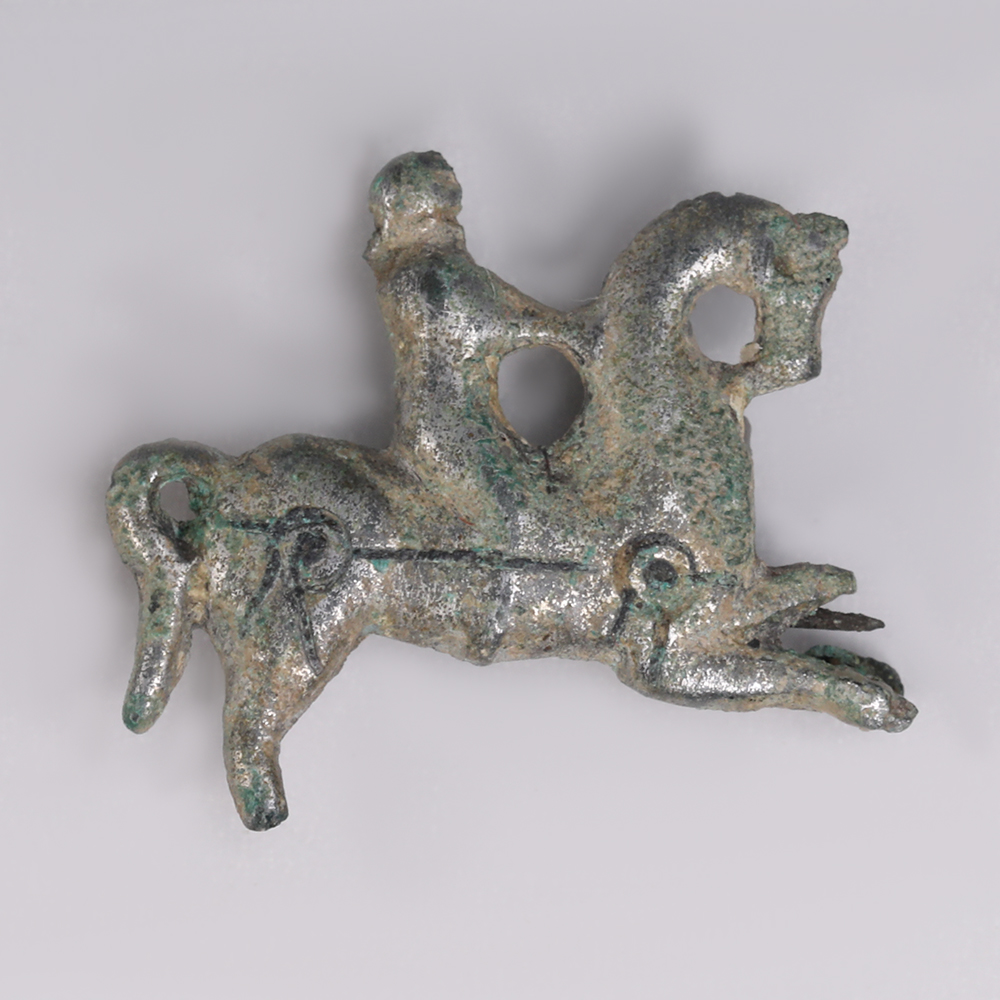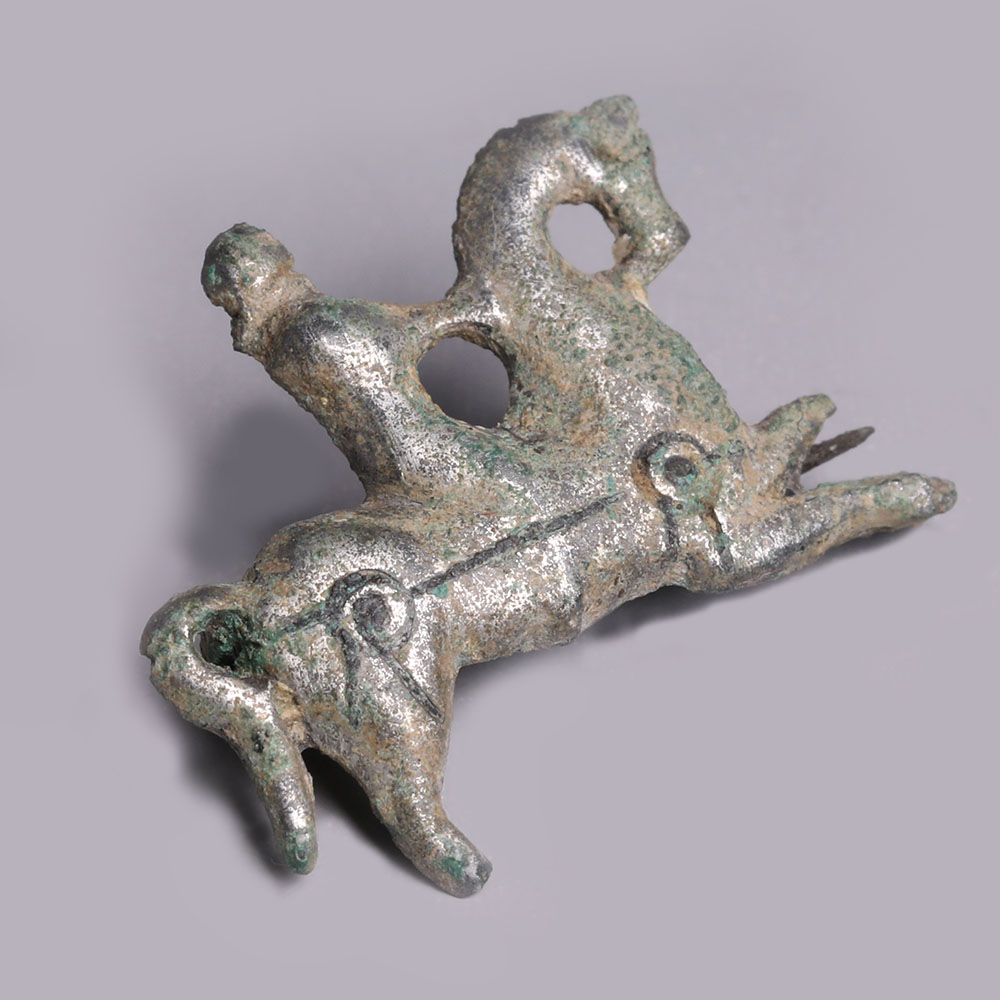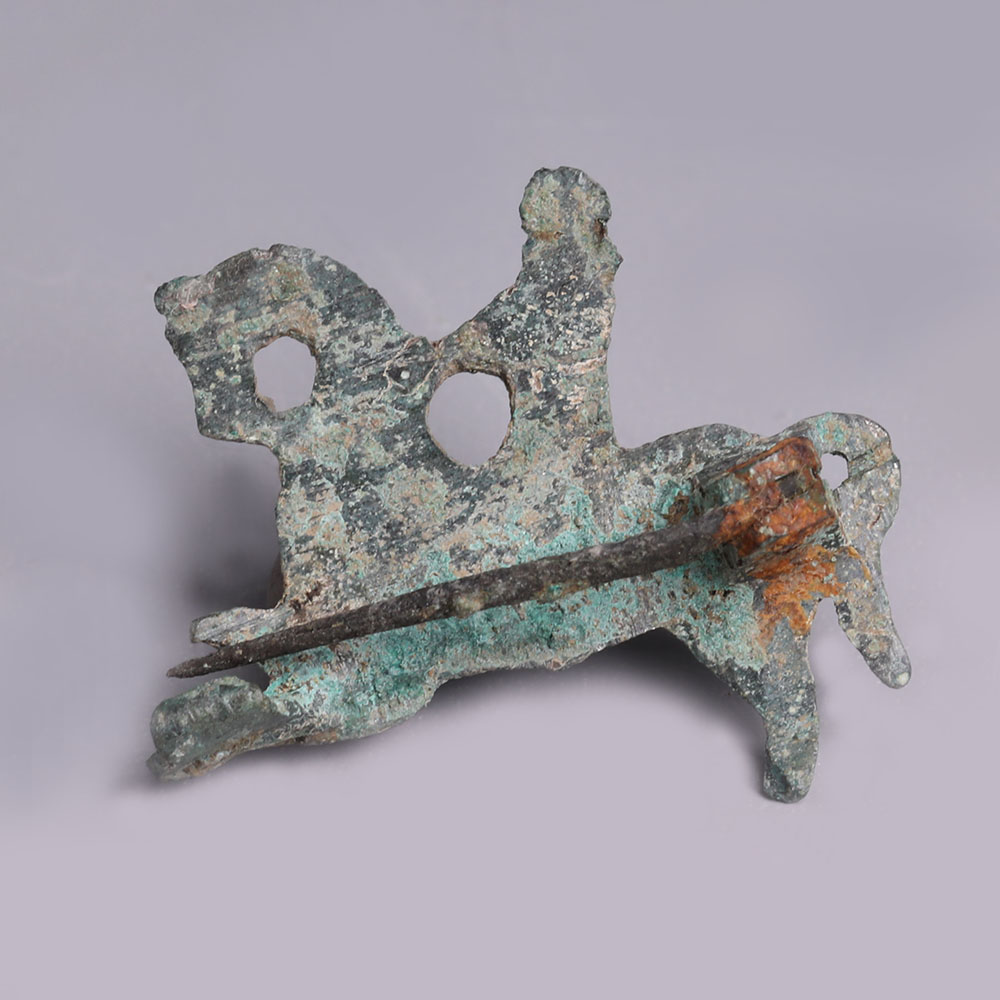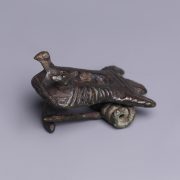Fibulae or brooches were originally used in Ancient Greece and in the Roman Empire for fastening garments, such as cloaks or togae. The fibula designs developed into a variety of shapes, but all were based on the safety-pin principle. Brooches modelled in the shape of animals have been vastly recovered across all the Roman Empire, including Roman Britain. The distribution of archaeological finds suggests that the major production centres for such ornamentation were Britain and Gaul. The horse-and-Rider type is amongst the more common of types found amongst the zoomorphic repertoire, although enamelled varieties seem more common. Their popularity could be the result of the horse being a status symbol amongst the Celtic population.
Romano-Celtic Tinned Bronze Horse-And-Rider Brooch
$330.10
A finely cast ancient Romano-Celtic tinned bronze brooch depicting a male figure riding on a naturalistically portrayed leaping horse. The horse’s profile is elegantly curved, its head bowed as the rider’s outstretched arms hold its reins. The forelegs are horizontally rendered, to depict the motion of the horse, mid-leap. The animals trappings are carefully incised, possibly once holding enamelled inlays. The brooch has a well-preserved, original pin to the reverse.
Provenance: From a Surrey gentleman's collection (DG), purchased on the London Art Market from an ADA member, formed 1990's onward.
Condition: pVery fine condition, covered with green patination. Good traceames of rust to the hinge.
SOLD
| Weight | 3.4 g |
|---|---|
| Dimensions | L 1.9 x H 2.2 cm |
| Culture | |
| Metal | |
| Region |



